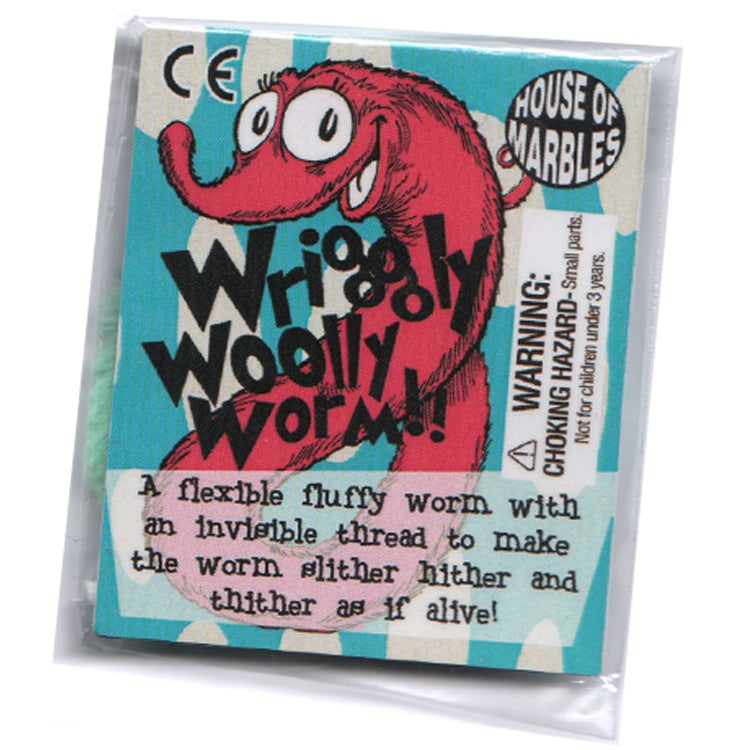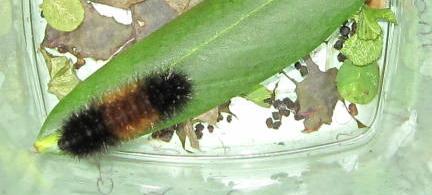

It now appears that sheer chance or dumb luck is involved when finding a larva. There are some wooly worms that spend their entire larval life either being entirely brown or black.

The genetics of the brood can also affect the coloration. Temperatures at hatching of the eggs can affect width of the rusty brown to black stripes. The reason for those “predicting” stripes has everything to do with genetics and hatching conditions. The first hatches in May and second in August. We have two generations of these striped larvae each year.

But, alas, fiction is so much more entertaining than reality. They have additionally deduced that there 13 weeks of winter and that every black segment means one week of bad weather. The real wooly worm aficionados have even counted the body segments and determined that there are 13. Wide black stripes mean a bad winter, whereas a wide brown stripe in the middle means a mild winter. The story is that by looking at the stripes on the larvae, the amount of black determines how severe the winter weather will be. This fuzzy caterpillar is currently found crawling on sidewalks and sitting on porches all over Michigan. The brown stripe is in the middle and both ends are black. The larvae have rusty brown and black stripes on their bodies. Wooly worms or banded wooly bears are the larvae or caterpillars of the Isabella tiger moth. But is this possible? Is a small larva able to do what the weather forecasters with sophisticated predicting equipment cannot? Let’s meet these insect experts. Most people have heard about how this little larva can predict just how bad the winter will be. For those who are outside raking, they often discover the furry, black and rusty brown wooly worm.

According to the YouTube channel 'Give it a Grow', the "hairs" of the worm feel somewhat spikey and can cause some skin irritation.With the fall weather comes garden and yard cleanups. It's important to note that you'll want to proceed with caution when spotting a woolly worm in the Treasure Valley. Now, we already know that the Farmer's Almanac already predicted a harsh winter for Idaho this year, but does the woolly worm confirm this? Apparently, some scientists say that the woolly worm's winter forecast could actually have some truth to it while others dispute that the color difference could simply be a result of age (they can grow to be up to 14 years old!). What's interesting is a member of the Facebook group posted a photo of a woolly worm in Kathryn Albertson Park that was predominantly black with just two "rings" brown in color. The wider the rusty brown sections (or the more brown segments there are), the milder the coming winter will be. The more black there is, the more severe the winter.


 0 kommentar(er)
0 kommentar(er)
